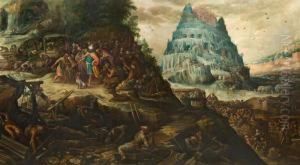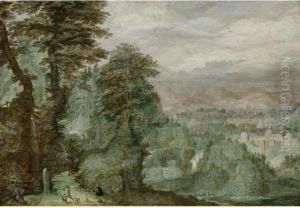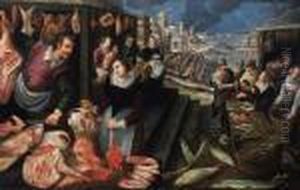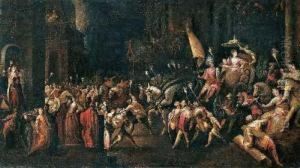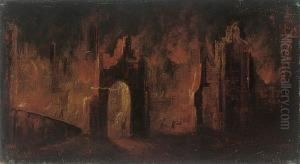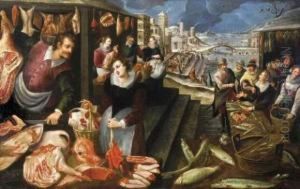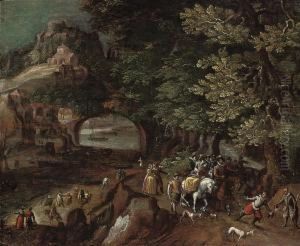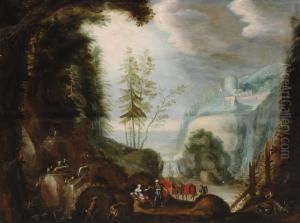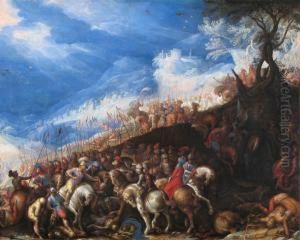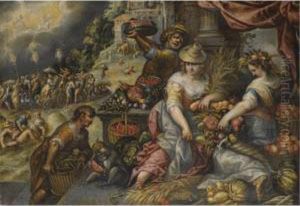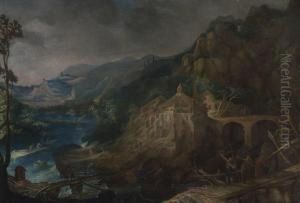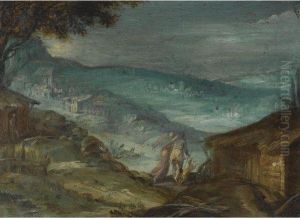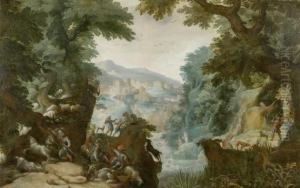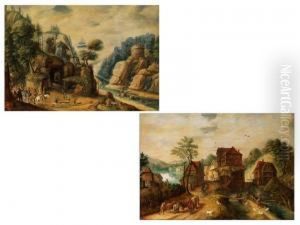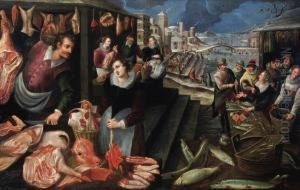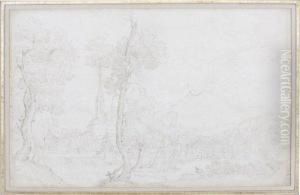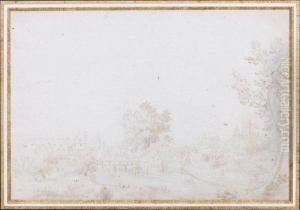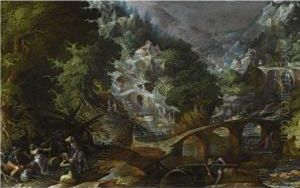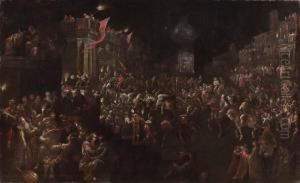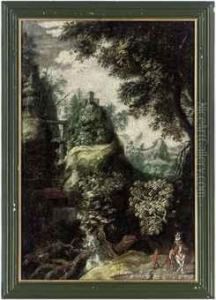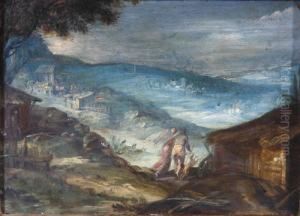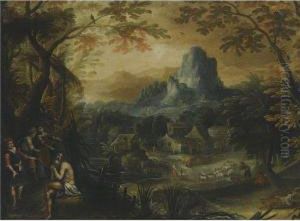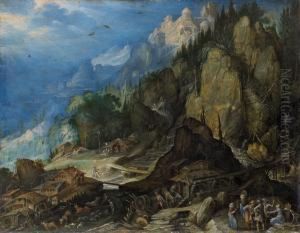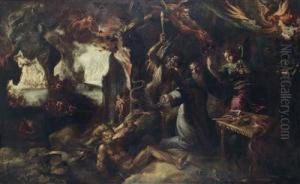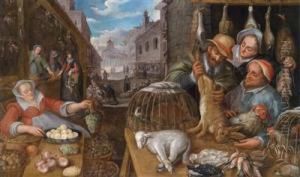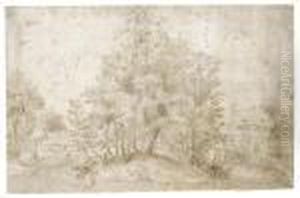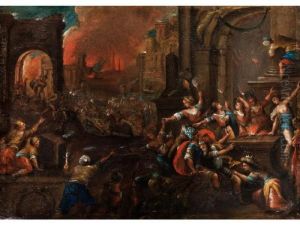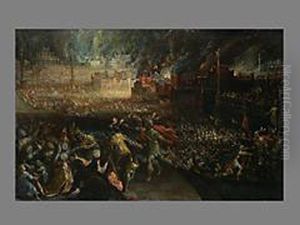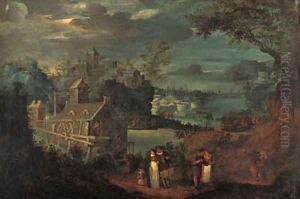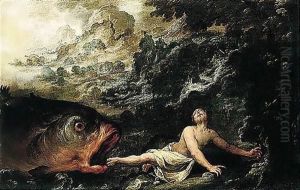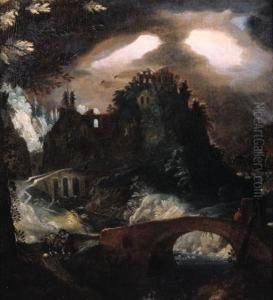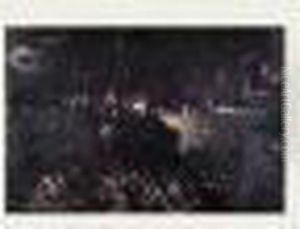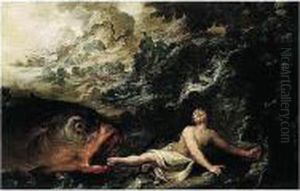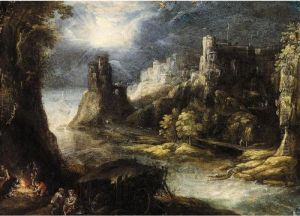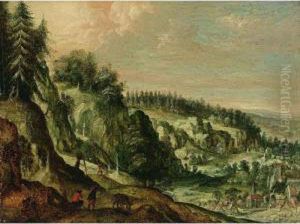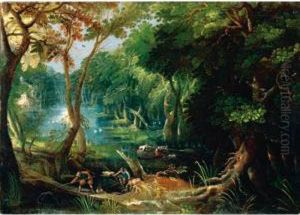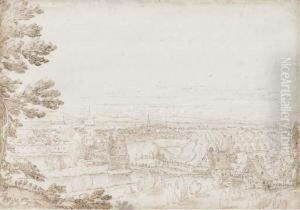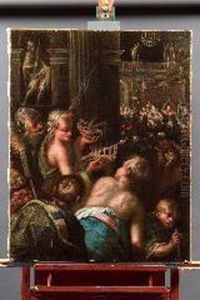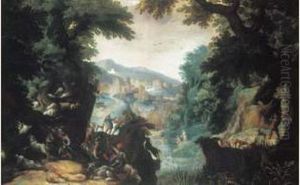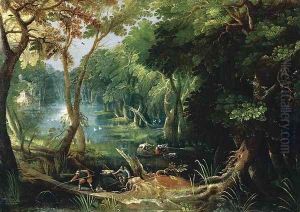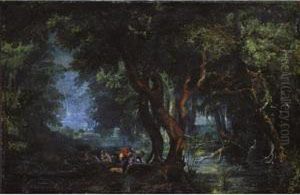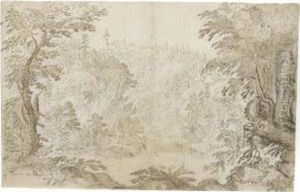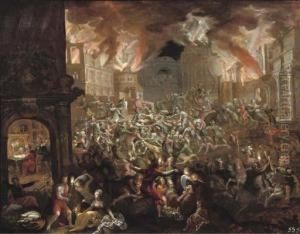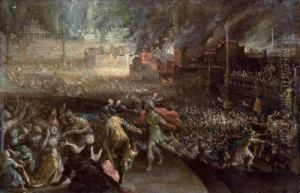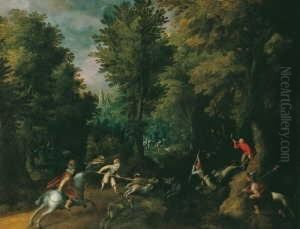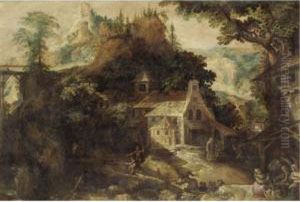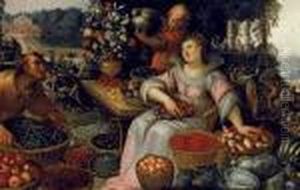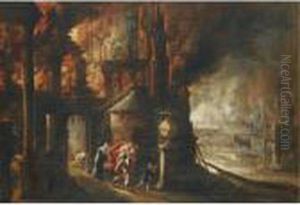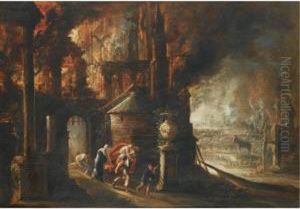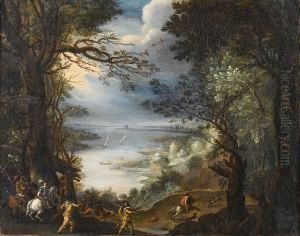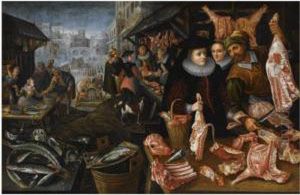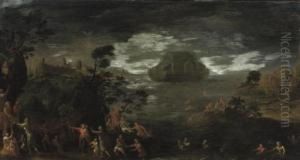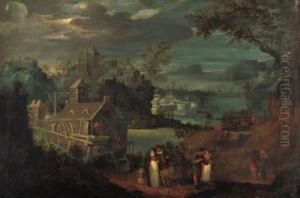Frederik van Valkenborch Paintings
Frederik van Valkenborch was a Flemish painter born in 1566 in Leuven, a city in what is now Belgium. He belonged to a family of artists; his father, Marten van Valkenborch, and his brother, Lucas van Valkenborch, were also painters known for their landscapes and cityscapes. The Valkenborch family, including Frederik, lived in a time of religious and political upheaval due to the Dutch Revolt against Spanish rule, which led many artists from the Southern Netherlands to move to the North or seek opportunities elsewhere in Europe.
Frederik, like other members of his family, traveled extensively. He and his brother Lucas worked together in Frankfurt am Main around 1590. Frederik's style was influenced by the Northern Mannerist aesthetic, which was characterized by a high degree of ornamentation and an often artificial or exaggerated approach to figures and landscapes. His works typically include detailed and bustling scenes, often with a focus on peasant life, festivals, and markets, capturing the essence of the times with a mix of realism and allegory.
Despite the fact that Frederik's works were less known than those of his brother Lucas, he managed to develop his own artistic identity within the Mannerist movement. His paintings are noted for their vivid details and the lively atmosphere of the depicted scenes. Some of his notable works include landscapes and cityscapes that show the influence of his father's teaching, but with a distinctive style that incorporated the dynamic culture and environment he encountered during his travels.
Frederik van Valkenborch's life, much like that of many artists of his time, was a blend of artistic endeavor and a response to the social and political climate of the era. He died in 1623, leaving behind a body of work that, while not as widely recognized today, offers valuable insights into the artistic trends and social dynamics of the late 16th and early 17th centuries.
